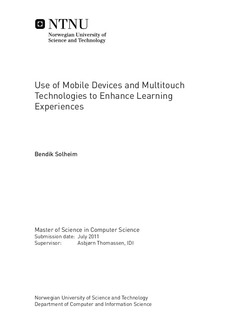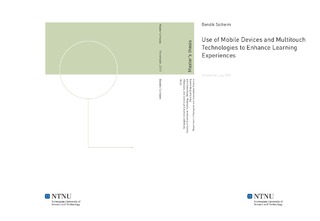| dc.description.abstract | The goal of this thesis was to investigate the usage of mobile devices with multitouch capabilities in the learning of procedural knowledge. A system, consisting of three prototypes, was to be implemented as a way of examining our two hypotheses:H1: Through using a conceptual model close to how the human mind perceive objects, we can increase consistency both in the creation of new user manuals and in the learning process.H2: By taking advantage of multitouch technologies we can introduce a more natural way of interacting on virtual representations of real-life objects.A lot of research was conducted on the usage of a conceptual model containing information on the physical attributes and the procedural knowledge to back our applications, and how this best could be realized. Existing technologies for creating 3D models was investigated, but was quickly discarded due to the unique representation that was needed to successfully integrate the model with GOMS. The research process concluded that an application for describing new devices would have to be developed as well.Three applications was developed to investigate our hypotheses: an application for describing the aspects of a device, written for Mac OS, a server for communicating with prolog over TCP, written in Java, and an application for displaying the device and allowing for interaction, written for the iOS platform. The final versions of these three prototypes made it possible to create objects consisting of cubes, storing them on the server, and rendering them on the mobile application. The report concludes by discussing the utility of our prototype in regards to the hypotheses. Although not in its optimal state, the prototype demonstrates the utility of pure gestural interfaces, and how well established technologies such as prolog and GOMS can be used to empower them. Finally, interesting extensions and further work based on this thesis is proposed, demonstrating its versatility. | nb_NO |

